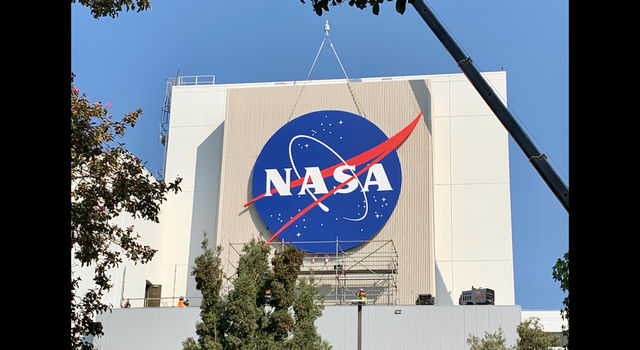Blogs | Slice of History | February 18, 2014
Hailstone Research
In 1979, this test fixture was used to study how much damage would occur when a solar panel was hit with hail measuring 1/2 inch to 5 inches in diameter. The white tube is the hailgun barrel. Interchangeable barrels of various sizes matched the diameter of the “hail” or ice ball being tested. The solar panel was mounted on the ceiling of the test facility, and an air compressor provided the force to project hailstones upward at about the same velocity as a storm. In this photo, Lee Albers and Bill Peer of the Test and Mechanical Support Section at NASA's Jet Propulsion Laboratory load an ice ball into the barrel.
Some of the same equipment was originally used to test possible hail damage in Deep Space Network antenna panels. In summer 1962, after similar tests were done at the South Africa Deep Space Station, a hailstorm simulation facility was developed at JPL to continue the study. The equipment included heated molds to form ice balls of various sizes and a chest freezer to keep them at 18 degrees Fahrenheit.
This post was written for “Historical Photo of the Month,” a blog by Julie Cooper of JPL's Library and Archives Group.
TAGS:HISTORY, TECHNOLOGY, SOLAR PANEL







